musical resources, music lessons and courses
How to Read a Lead Sheet: A Beginner’s Guide
👉 Do you want to learn how to read a lead sheet? In this beginner’s guide, we’ll explain step by step the key elements: the clef, the key signature, the time signature, the tempo, the melody, the chords, and the repeats. Discover how to interpret these sheets easily and start playing your favorite songs! 🎶😊
SIGHT READING
Abel Serra Quintana
3/16/20254 min read
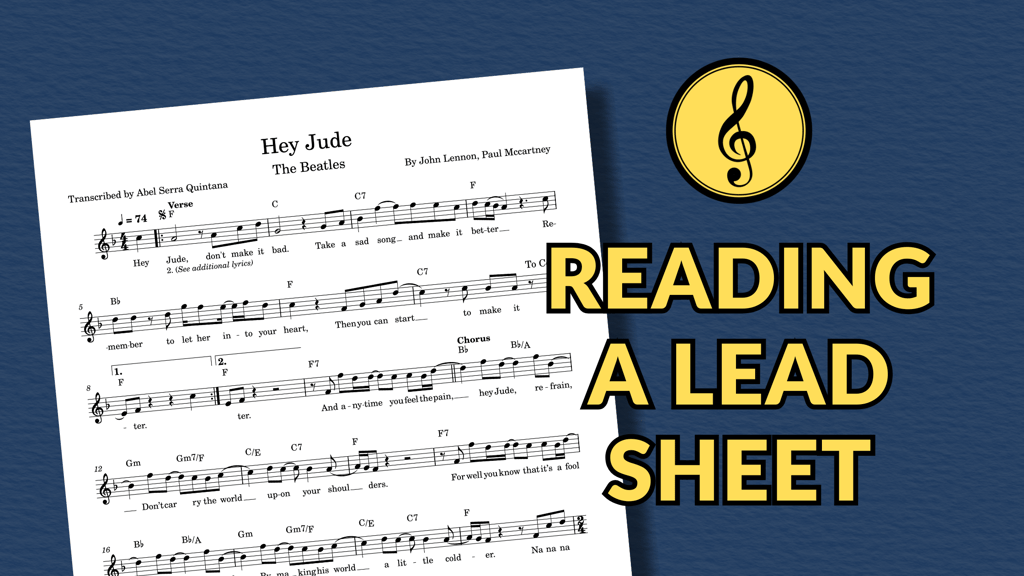

In many modern music styles (jazz, pop, rock…), a type of sheet music simpler than a full score is often used, called a lead sheet.
A lead sheet provides the essential information needed to play a piece: melody, chords, and basic structure. In this guide, we will go step by step through the main elements found in a lead sheet and how to interpret them.
1. The Key: What Range Does the Melody Move In?
A lead sheet always begins with a key signature, which tells us which notes will be played and in what range. The most common is the treble clef, as these sheets are typically designed for melodic instruments and vocals.
2. The Key Signature: What Key Is the Piece In?
Right after the clef, we find the key signature, which indicates how many accidentals (sharps ♯ or flats ♭) the piece has and helps us determine its key.
For example:
• If we see one F-sharp (#), the key is likely G Major or E minor.
• If we see B-flat, E-flat, and A-flat (♭), the key could be E♭ Major or C minor.
3. The Time Signature: How Are the Beats Grouped?
The time signature tells us how the beats are grouped rhythmically. The most common are:
• 4/4 → The most common in pop and jazz music. Counted as “1, 2, 3, 4” in each measure.
• 3/4 → A ternary meter, like in waltzes (“1, 2, 3”).
• 6/8 → A compound meter, like in some ballads.
This number helps us understand how to group and count the beats when playing or singing.
4. The Tempo: How Fast Is the Piece Played?
The tempo tells us whether the piece is fast or slow. It can be indicated in two ways:
• With an Italian word (common in classical music): Largo (very slow), Andante (moderate), Allegro (fast), etc.
• With a bpm (beats per minute) number, more common in modern music. For example: ♩=120 means there are 120 quarter notes per minute.
👉 In some styles, like jazz, eighth notes are often not played evenly. When we see the “Swing” indication, it means that eighth notes are played with a “lopsided” rhythm, where the first eighth note is longer than the second (we will discuss this further when talking about triplets). This gives the music its characteristic feel!
5. The Melody: The Main Line of the Piece
A lead sheet contains the melody written in a single line. This means we only see a sequence of notes that represents the main theme.
• In a band, the melody is played by an instrument (saxophone, guitar, piano, etc.) or sung by the lead vocalist. If there are lyrics, they are usually written below the melody line.
• If we play a harmonic instrument (piano or guitar), we can add the chords while following the melody.
6. The Chords: The Harmonic Foundation of the Song
Above the melody, we find chord symbols, which tell us which chords to play at each moment.
Examples of chord symbols:
• C → C Major
• Am → A minor
• G7 → G dominant seventh
• Dm7 → D minor seventh
Musicians who play harmonic instruments (like guitar or piano) can improvise the accompaniment based on these chords, applying fingerings and rhythmic patterns that fit each one.
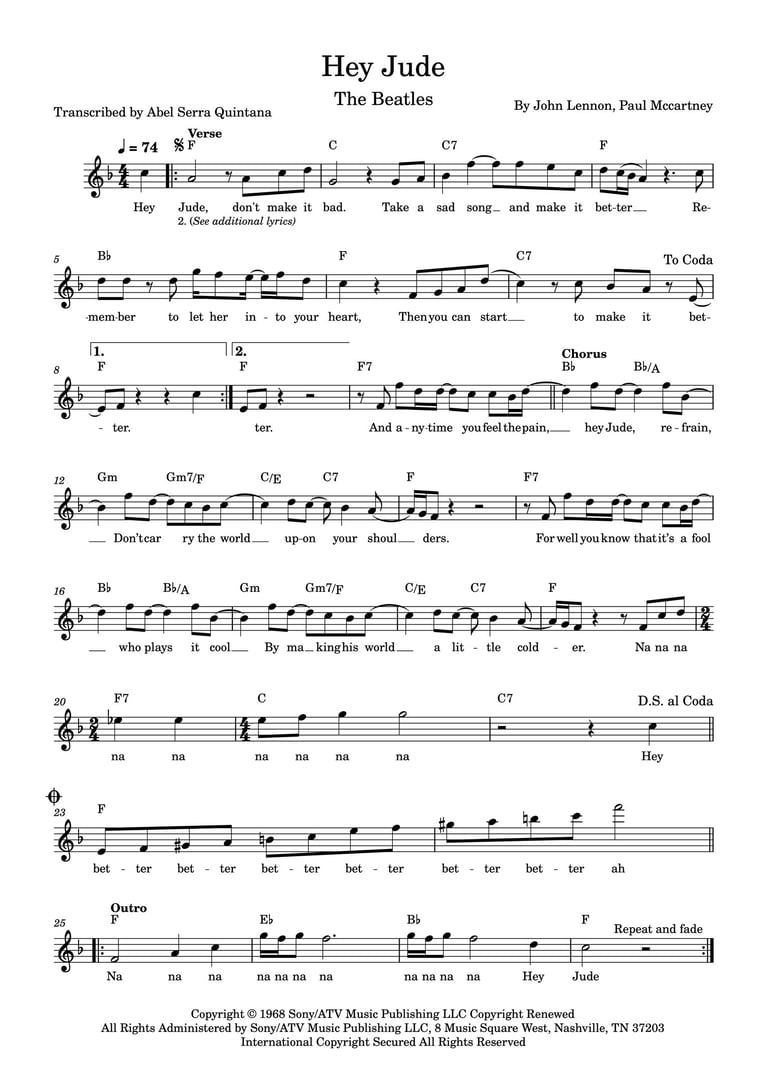

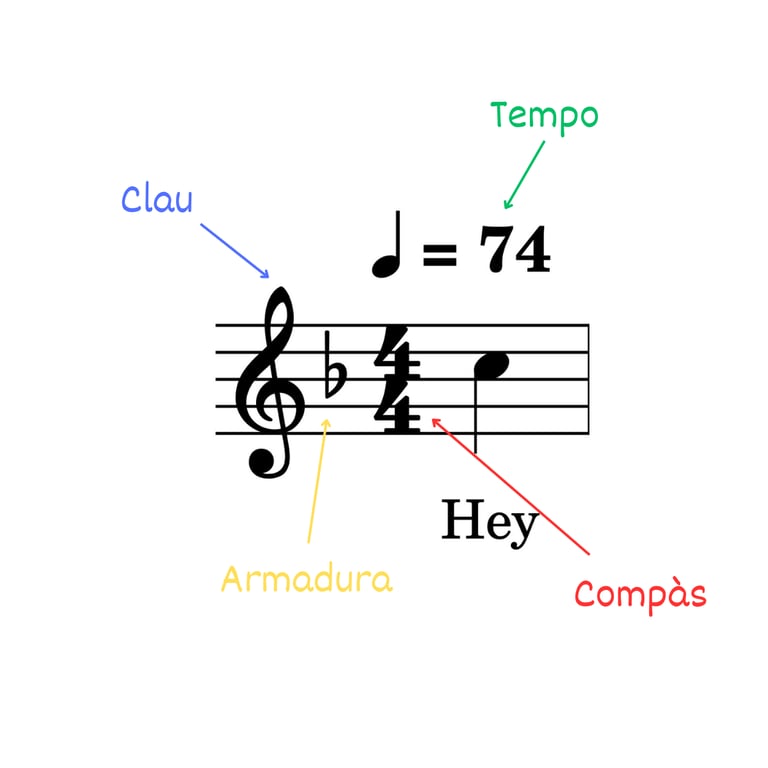

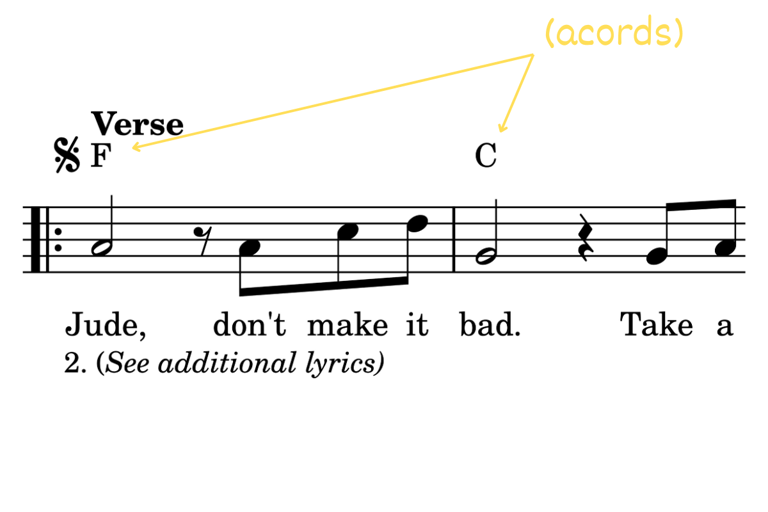

7. Repeats and Directions: No Need to Write the Entire Score!
Lead sheets are designed to be practical and compact. To avoid making the sheet music too long, symbols and indications help us follow the structure without writing every repeated measure. The most common ones are:
• Repeat Bars → ||: … :|| indicate that the section between these marks should be played again.
• Repeat Endings (1st, 2nd, etc.) → When there is a repeated section, numbered endings indicate different final measures:
• 1. → Play this the first time.
• 2. → On the repeat, skip the 1st ending and play the 2nd ending instead.
• D.C. al Fine (Da Capo al Fine) → Go back to the beginning (Da Capo) and finish where it says Fine.
• D.S. al Coda (Dal Segno al Coda) → Go back to the 𝄋 (Segno) symbol, play until To Coda, then jump to the final section (Coda).
• Coda → A separate final section, to which we jump when instructed in the sheet music.
These indications help structure the piece without writing it out in full, making it easier to read and interpret (and preventing sheet music from falling off the music stand!).
🔹 Extras in a Lead Sheet: Additional Useful Information
Besides the basic elements, many lead sheets include markings that help musicians understand the structure and form of a song more easily:
• Sections (Verse, Chorus, Bridge, etc.)
• In pop and jazz music, it is common to see labels like Verse, Chorus, Bridge, or Intro/Outro to indicate different sections of the piece.
• These help musicians quickly navigate the structure and understand how sections repeat.
• Measure Numbers
• Some lead sheets include measure numbers every few bars or at the beginning of each line to make it easier to locate specific sections.
• This is useful in rehearsals when musicians need to jump to a specific measure, e.g., “Let’s start at measure 17.”
These extra elements help musicians interpret the piece more efficiently and communicate better with each other.
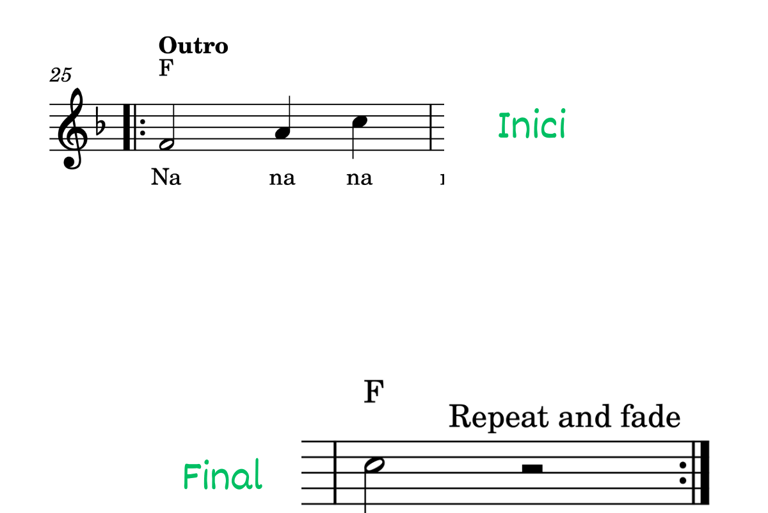

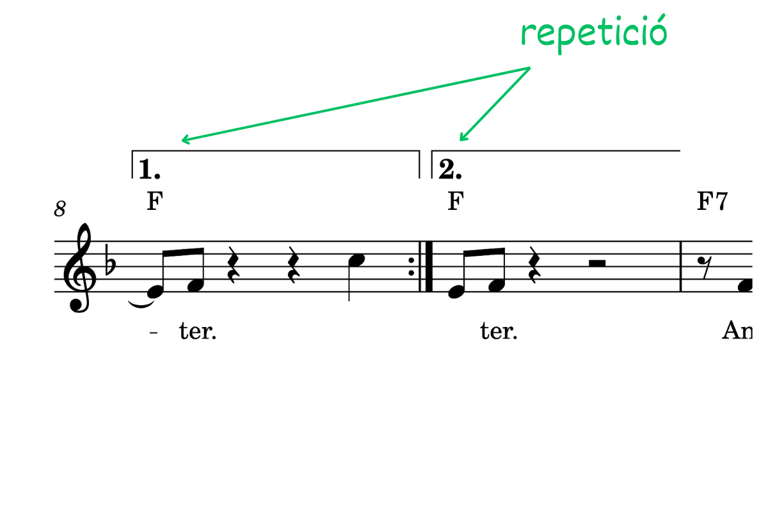

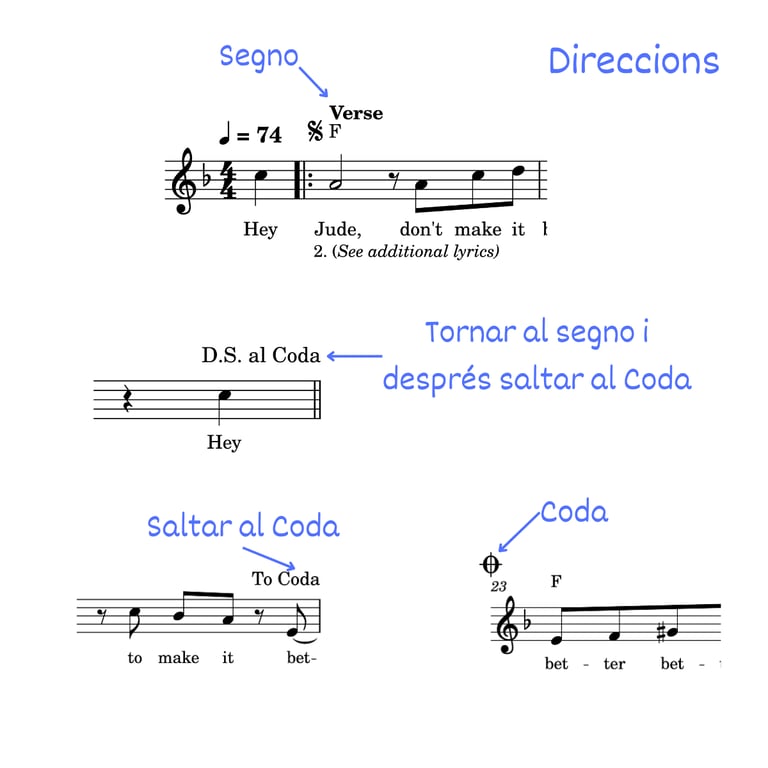

Conclusion
Now that you know the basic elements of a lead sheet, I encourage you to find a simple song and try following along. The more you practice, the faster you’ll be able to read and play it!
📥 Recommended Practice: Try reading the lead sheet for “Hey Jude” by The Beatles. Happy playing! 😉
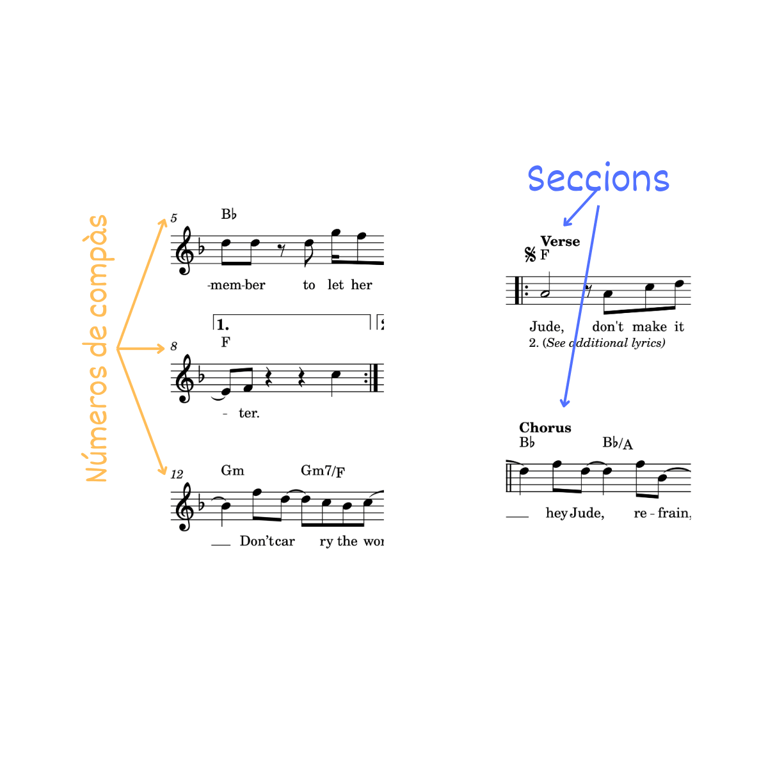

Abel Serra MUSIC
Musical solutions tailored for musicians, schools, and bands
Phone and email
Contact
info@abelserramusic.com
© 2025 Abel Serra Music. All rights reserved.
